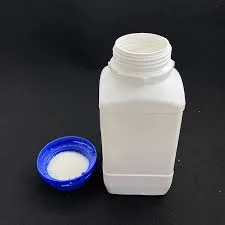Sodium Thiocyanate Solution Properties, Uses, and Safety Considerations
Sodium thiocyanate (NaSCN) is an inorganic compound that plays a significant role in various industrial and laboratory applications. This white, crystalline solid dissolves readily in water, forming a colorless solution. Sodium thiocyanate is used in a wide range of fields, including chemistry, agriculture, and pharmaceuticals. This article explores the properties, uses, and safety considerations associated with sodium thiocyanate solutions.
Properties of Sodium Thiocyanate Solution
Sodium thiocyanate solutions are characterized by their versatility and stability. When dissolved in water, the compound dissociates into sodium ions (Na⁺) and thiocyanate ions (SCN⁻). The resulting solution is often used due to its ability to form complexes with various metal ions, making it a valuable reagent in analytical chemistry.
One notable property of sodium thiocyanate is its relatively high solubility in water compared to many other salts. This high solubility allows for the preparation of concentrated solutions, typically used in laboratory settings. The ionic nature of the compound also imparts certain physical characteristics, such as a relatively high boiling point and moderate conductivity.
Applications of Sodium Thiocyanate Solution
Sodium thiocyanate solutions find application in several areas
1. Analytical Chemistry Sodium thiocyanate is commonly used as a reagent in titrations, particularly in complexometric titrations where metal ions need to be analyzed. It can form stable complexes with metals such as iron, which is essential in determining their concentrations in various samples.
sodium thiocyanate solution

2. Agricultural Applications In agriculture, sodium thiocyanate is sometimes used as a herbicide and to control certain pests. Its effectiveness in disruptively affecting the biological processes of unwanted plants and pests can aid in improving crop yields.
3. Pharmaceuticals Sodium thiocyanate has shown promise in medical research, particularly in studies related to its effects on the thyroid gland. It acts as an antithyroid agent through its ability to inhibit the uptake of iodine, a crucial element for thyroid hormone synthesis.
4. Industrial Uses The compound is also utilized in the production of various chemicals and as a reagent in the synthesis of organic compounds. Its versatility makes it a useful ingredient in creating diverse products, from organic solvents to dyes.
Safety Considerations
While sodium thiocyanate is useful, it is not without its risks. It is crucial to handle this compound with care due to its potential toxicity. Ingestion or inhalation of sodium thiocyanate can lead to adverse health effects, including nausea, headaches, or more severe symptoms if exposure levels are high. Therefore, laboratory personnel should always wear appropriate personal protective equipment (PPE), such as gloves and safety goggles, when working with sodium thiocyanate solutions.
Moreover, sodium thiocyanate's environmental impact must also be considered. It can be harmful to aquatic life if released into water bodies in significant amounts. Therefore, proper disposal methods should be employed to prevent environmental contamination.
Conclusion
Sodium thiocyanate solution is a valuable chemical with broad applications across multiple fields. Its properties facilitate its use in analytical chemistry, agriculture, pharmaceuticals, and various industrial processes. Despite its benefits, safety precautions are imperative in handling this compound to mitigate health risks and environmental damage. Understanding both the versatility and the safety considerations related to sodium thiocyanate will ensure its responsible use in scientific and industrial settings.

